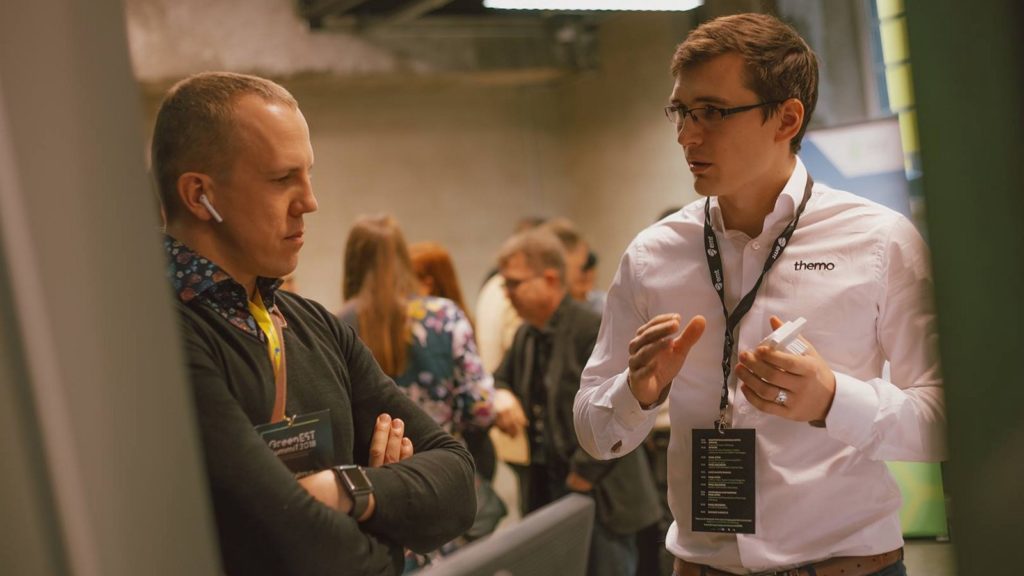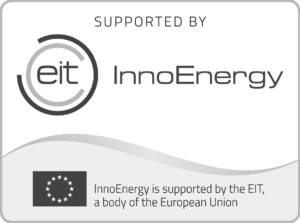21.11.2018
An important property often missed in green buildings
Following is the article about the future of the buildings by Madis Uuemaa, who participated in the first greentech conference in Estonia organized by Science Park Tehnopol – GreenEST Summit 2018.
It was a pleasure to participate last month in the GreenEST Summit. Big thanks to Tehnopol for inviting Themo as one of the innovative start-ups showcase. Participating in such an event creates a lot of valuable discussions with different visionaries of green and energy efficient buildings.
Why green buildings matter?
Conventional buildings have a substantial impact on the health and wellbeing of people and the planet. They use resources, generate waste, and emit greenhouse gases throughout their life cycle which can be 50, 75, or more years.
Buildings are responsible for approximately 40% of energy consumption and 36% of CO2 emissions in the EU. Inevitably, the way we build, has to change and straight away!
However, the green building is not something new that is built in the future — it’s the existing buildings that need to be turned green!
Currently:
- 35% of the EU’s buildings are over 50 years old
- 75% of the building stock is energy inefficient
- 1% of the building stock is renovated each year.
Therefore, the more we renovate existing buildings, the better potential we have to lead to significant energy savings and cut worldwide carbon emissions.
How should the heating be managed in green buildings?
If you already don’t have a programmable thermostat then you should get one. Cutting down the heating when the building is not used, counts as a biggest energy saving you could possibly get. With this, I can recommend many good models that can do that for you, automatically.
But, what about the future?
Today we are already packing buildings with different sensors to measure and analyse the climate and the presence of the occupants. But this is taken merely from a one point of view from the end user, the people living in this one building.
I believe that all the buildings are part of one large energy network and shouldn’t be considered as a single entity. This network of concrete, steel and glass consume vigorously our energy without giving anything in return. Though they provide the rooftops as a convenient place for solar panels, this only helps renewable energy production. As we install more renewable energy sources, we also need to install more energy storage systems.
However, every building may have one more useful property — that’s thermal mass.
Thermal mass can work for or against you.
Thermal mass is the ability of a material to absorb and store heat energy. A lot of heat energy is required to change the temperature of high-density materials like concrete, bricks and tiles. When we cut the heating, these materials will start slowly releasing its heat energy back to the surrounding environment. Not used correctly, it can cause a lot of inconvenience for the occupants.
However, thermal mass acts a lot like a battery and from the renewable energy point of view, this is a good thing!
So far, the applications for effective use of thermal mass involves absorbing the heat from the solar rays or from the air. This is sometimes supplemented by the heating system to compensate too large temperature fluctuations.
In the future, we see that you can effectively store cheap and surplus renewable energy within the thermal mass using for example underfloor heating systems. But to do so we must understand the rhythm.
It is almost like buildings are breathing. They breath in (heat the floors) whenever cheap electricity is available and breath out when heat is needed. However, similarly with the process of the respiration, with every breath more heat is tied within the concrete slab, allowing to provide heat later over longer period of time. Heat in, heat out.
How artificial intelligence can help?
To fully understand this rhythm, we need to understand all the different variables that affect the material thermal mass, the effectiveness of it and the environment together with the occupational habits. The number of variables rise quickly when more precise prediction models are needed to be made.
Using deep neural networks, we can bring the precision of our prediction very close to the point we can truly make informed decisions when to turn the heating on or off.
This is what we are trying to achieve in my company with our Themo smart thermostats.
I believe that our current buildings can be turned into nearly zero energy buildings with more affordable solutions than one might think. Just some careful planning and clever design of thermal mass is required.
(Source: Madis Uuemaa article about the future of the buildings)













